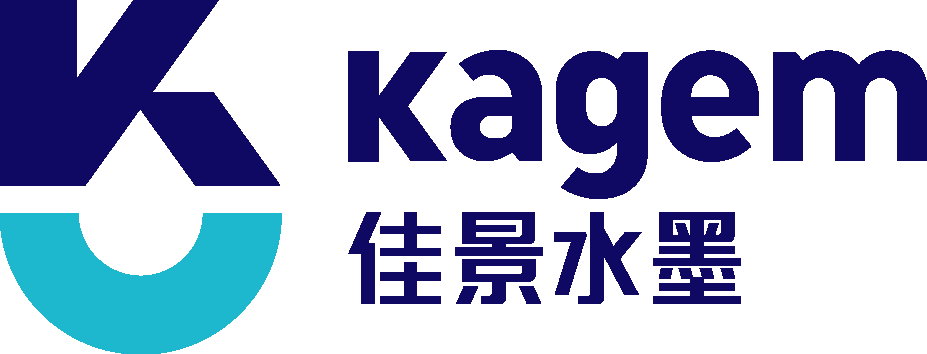
Home About Us Core Strength News Products Case Services Contact Us
Publisher:Kagem Number of visits:464
【Abstract】The anilox roller is also called “the heart of the printing machine”, and its effect directly affects the fineness and uniformity of printing. This paper has detailed the basic knowledge of the anilox roller.
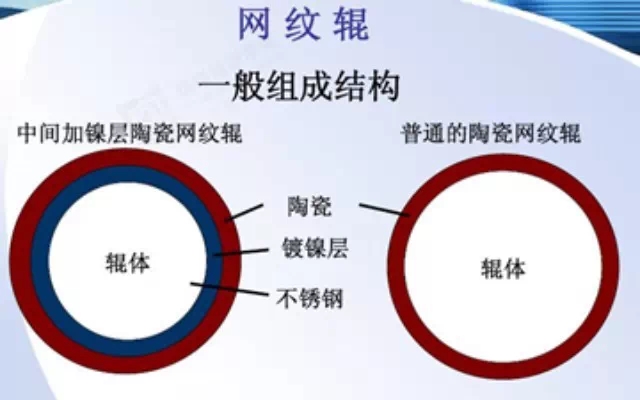
First, the three functions of the anilox roller
Firstly, uniform and stable ink transfer, using the concave carrier on the surface to transfer and control the ink, thus having the functions of ink storage, ink distribution, and ink transfer;
Secondly, avoiding the ink stick, because the anilox roller has high processing precision, the ink can be well transferred even under the light pressure state, thereby reducing and avoiding the generation of the ink stick and the ghost image;
Thirdly, increasing the speed of the car, due to the use of anilox roller, effectively overcomes the phenomenon of "flying ink" and plays a vital role in increasing the speed of the printing press.
Second, the principle of ink transfer of anilox roller
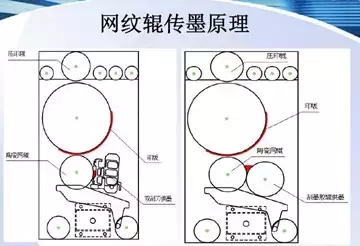
Figure: The principle of anilox roller ink transfer
Third, the composition of the roller
The composition mechanism of the anilox roll is generally divided into two types: a nickel-plated ceramic anilox roll and an ordinary ceramic anilox roll. The difference between the two is shown in the following figure:
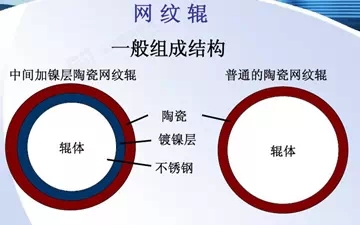
Figure: Comparison of two anilox roller structures
Among them, the basic structure and production requirements of ceramic anilox roller are as shown in the figure:
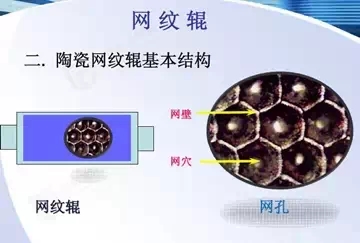
Figure: Basic structure of ceramic anilox roll
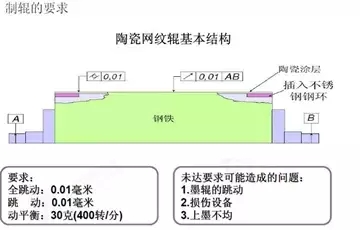
Figure: Requirements for the production of ceramic anilox rolls
Fourth, how to choose anilox roller? Which indicators are important?
For high quality presses, laser engraved rolls with a clear number of screens and a large area of smooth ink film are the best choice. Computerized measurements of cell volume, structure and alignment angles ensure that anilox roll suppliers are able to more accurately predict the printing capabilities of the device.
However, the final choice of anilox roller must be based on actual needs. In the most basic form of the roll, there are four types of screens to choose from: full version of the field, solid and lines, thin lines and fonts, and four-color printing. Obviously, the final printed product is a combination of the above types, and when it is subdivided into individual colors, it can be classified into the above categories, and their printing effects may be different.

图:网纹辊线数图
Anilox roller line
The number of anilox rolls is the most important part of the anilox roll, which refers to the number of cells in the same unit length along the direction of the anilox roll. The number of screen lines can be roughly divided into the following types according to the type of printing: 100 lines/inch, 250 lines/inch or less (full version in the field), 200 lines/inch to 300 lines/inch (solid and line), 400 lines/ Inches ~ 1000 lines / inch (including above) (four-color printing). The plate can use a variety of screen lines, so the four-color printing process has a variety of cable options. The simplest truth is that the smaller the plate network, the smaller the number of roller lines. Likewise, the amount of ink or coating used is generally based on the following criteria: To a large extent, the depth of the wire is first determined, ie the theoretical volume of the particular cell shape is calculated. The anilox roll supplier must understand the wet and dry weight of the ink, as well as its solids content, in order to provide customers with better recommendations for use.
The way the ceramic anilox rolls are mainly arranged
The main arrangement of the ceramic anilox rolls is mainly the direction in which the net lines are arranged and the angle with the direction of the strike. The degree formed is divided into 30°, 45° and 60°. The ceramic anilox rolls used in general flexographic printing presses are usually arranged in a 60° arrangement, and the cells are in a regular hexagon. In this case, the cells are relatively compact, and the cells are nearly 15% more than other arrangements. More holes of the same size can be engraved on the surface of the same area of the web roller, then more ink can be transferred, and the excess position between the cells can be eliminated to the utmost extent, under the condition of delivering the same amount of ink. The hole can be made shallower and can make full use of the ink transfer. In addition, the 60° cell is easier to engrave, and the 60° line array of anilox rolls is more stable.
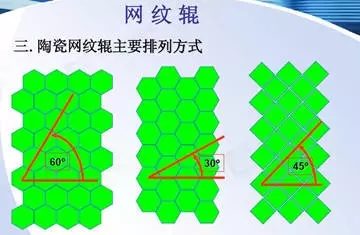
Figure: The main arrangement of ceramic anilox rolls
If the mesh structure is 90 degrees, the ink will grow in a strip shape; if it is 120 degrees, the structure will be more square. If you use a 60-degree mesh, the ink transfer will be better, and the print pressure will be smaller and the water flow marks will be less, as shown.
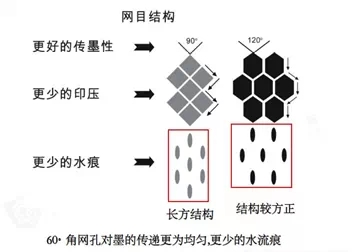
Figure: Mesh structure
Ceramic laser engraving anilox roller
In addition, as market competition becomes increasingly fierce, high-quality printing and uniform printing density become industry standards, many carton manufacturers are beginning to realize that traditional anilox rolls do not meet their production printing requirements. The market began to look for more wear-resistant coating rolls, and ceramic laser-engraved anilox rolls came into being. It not only overcomes the wear problem, but also provides a large number of screen lines, cell depth and arrangement angle for the printing press. Since the "single beam" laser is a non-contact engraving process, the shape of the cell is similar to a disk shape or a hemispherical shape. The application of traditional computer technology means that the laser can perform more than one shot on a single cell. This process is done by using "double beam" or "double click". This way is a great improvement for the engraving process. The ratio of the number of mesh lines to the printing plate is increased from 3:1 to 4:1, 5:1. even more. This will give you more open and useful cell counts, especially if the number of cells is large (usually when using high pigment "enhanced inks").
As the cell of the anilox roll, its aspect ratio is also very important. At present, the best aspect ratio is 28%. The aspect ratio is the depth of the mesh divided by the width of the mesh. The optimized value is generally 23-33%, as shown in the figure:
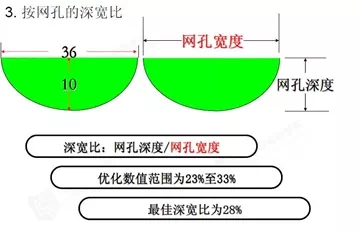
Figure: Mesh width to depth ratio
Because the width-to-depth ratio is different, the amount of ink is different, so there is a big difference between the transfer and cleaning of the ink. If the aspect ratio is greater than 33%, cleaning is difficult; if the width and depth are small, then the ink is less, printing is less. The vividness and layering will be very poor.
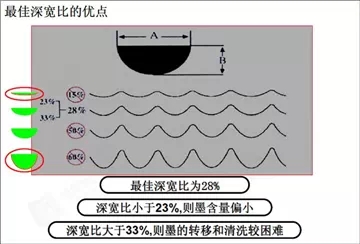
Figure: Advantages of the best aspect ratio
At present, cardboard carton factories generally purchase anilox rolls according to different product conditions. Common anilox rolls include steel rolls, ceramic rolls and high-wafer anilox rolls. Carton factories should also purchase according to actual conditions.
This article is reproduced in the "Flexobang" WeChat public account. If there is any infringement, please contact us to delete

Guangdong Jiajing Technology Co., Ltd. (hereinafter referred to as Kagem), founded in 1999, specializes in the R&D, production and sales of water-based inks, water-based varnishes, water-based acrylic resins, water-based acrylic emulsions, pearlescent binders and other eco-friendly water-based printing materials.
Add: Shibu Industrial Zone, Liaobu Town,Dongguan, Guangdong 523000 CHINA
Main Line:0086-769-82318231
Fax:0086-769-82318555
Sales:0086-769-82318668
Fax:0086-769-82311109
E-mail:sales@kagem.net